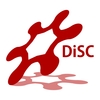Supramolecular chemistry and nanochemistry
Supramolecular systems and colloidal chemistry; self-assembly of nanostructures and nanoparticles.
Listed here below you can check the groups developing this research area's activities.
Applied Organometallic Chemistry
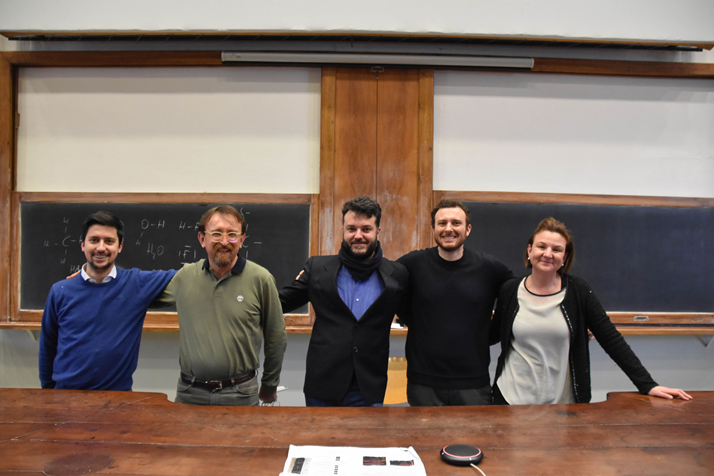
Prof. Alessandro Aliprandi (alessandro.aliprandi@unipd.it); Dr. Marco Baron (marco.baron@unipd.it); Prof. Andrea Biffis (andrea.biffis@unipd.it); Dr. Thomas Scattolin (thomas.scattolin@unipd.it); Prof. Cristina Tubaro (cristina.tubaro@unipd.it);
The group activity focuses on the design, synthesis, characterization and reactivity of selected classes of organometallic compounds with potential application as catalysts, as bioactive molecules or as active components for advanced materials and devices (luminescent devices, sensors, liquid crystals). The main target are late transition metal complexes with N-heterocyclic carbene ligands (NHCs). The structure and properties of the carbene ligands are matched to the metal centre to yield complexes with the desired properties. Ongoing research involves catalysts for C-H functionalizations and CO2 valorization, functional complexes for cooperative catalysis or improved bioactivity, as well as NHC-stabilized molecular gold clusters. We also study the luminescent properties and self-assembly behaviours of organometallic compounds and their application in electrochemiluminescence and chemiluminescence.
- Dinuclear gold(I) complexes with N-phosphanyl, N-heterocyclic carbene ligands: synthetic strategies, luminescence properties and anticancer activity, Dalton Trans., 2021, 50, 13554 - 13560.
- Solvent‐Driven Supramolecular Wrapping of Self‐Assembled Structures, Angew. Chem. Int. Ed., 2021, 60, 5407-5413.
- Palladium(II)-η3-allyl complexes bearing N-trifluoromethyl N-heterocyclic carbenes: a new generation of anticancer agents that restrain the growth of high-grade serous ovarian cancer tumoroids, Chem. Eur. J., 2020, 26, 11868 - 11876.
- Novel Iridium complexes with N-heterocyclic dicarbene ligands in light-driven water oxidation catalysis: photon management, ligand effect and catalyst evolution, DaltonTrans., 2020, 49, 2696 - 2705.
- Single-Step Synthesis of Dinuclear Neutral Gold(I) Complexes with Bridging Di(N-heterocyclic carbene) Ligands and Their Catalytic Performance in Cross Coupling Reactions and Alkyne Hydroamination, Organometallics 2018, 37, 4213-4223.
Bio Organic Chemistry
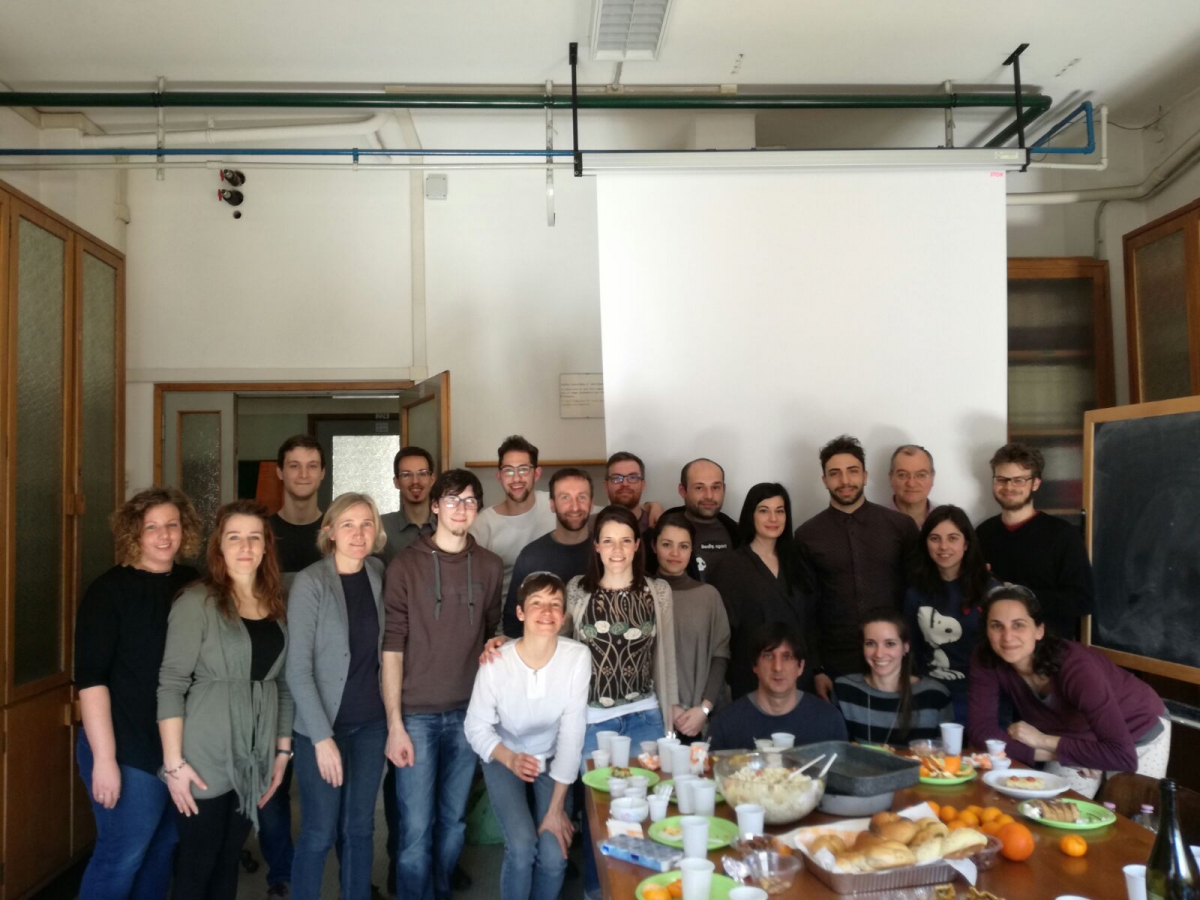
Dr. Barbara Biondi (barbara.biondi@unipd.it); Prof. Marta De Zotti (marta.dezotti@unipd.it); Prof. Fernando Formaggio (fernando.formaggio@unipd.it); Prof. Marina Gobbo (marina.gobbo@unipd.it); Prof. Alessandro Moretto (alessandro.moretto.1@unipd.it); Prof. Cristina Peggion (cristina.peggion@unipd.it)
The Bio Organic Chemistry group synthesizes and studies peptides of different origin and particularly those containing Cα,α-dialkyl amino acids.
The group is engaged in the following research lines:
- synthesis, conformation, mechanism of action and bioactivity (antibacterial and antitumor) of peptides and naturally-occurring peptaibiotics;
- antimicrobial photodynamic therapy;
- textiles functionalized with antibacterial peptides for biomedical applications;
- peptide nanotechnology: peptido-rotaxanes, peptide-decorated metal nanoparticles, self-assembled peptide polymers;
- synthesis and conformation of peptides with well-defined 3D-structures;
- peptide helices as rigid structural elements for spectroscopic studies and for electron transfer and photovoltaic applications.
- Albini F., Biondi B., Di Stasi A., Schivo A., Mardirossian M., Scocchi M., and Peggion C. Fragments of cathelicidins PMAP-36 and BMAP-27 and their D-enantiomers: Effects of all D substitutions on structure, protease resistance and antimicrobial properties. Bioorg. Chem, 63, 2025, 108715 (2025).
- Habrat Zoabi F., Zerihun M., Lizarovich R., Dalla Torre C., Davis L., Ertracht O., Barsheshet M., Atar S., Shalev D.E., De Zotti M., Senderowitz H., Qvit N. Inhibiting MARCH5/Mfn2 signaling as an alternative strategy to protect cardiomyocytes from hypoxia-induced mitochondrial dysfunction. Comp. Struct. Biotech. J., 27, 3045–3065 (2025).
- Fabbian S., Gabbatore L., Morbiato L., De Zotti M., Giorgio V., Battistutta R., Giachin G., Sosic A., Bellanda M. The OSCP subunit of ATP Synthase is a dimer in solution: strategy to induce the monomeric protein as a new tool for drug discovery. J. Mol. Biol., 437, 169267 (2025).
- Messina G.M.L., De Zotti M., Siano A.S., Mazzuca C., Marletta G., Palleschi A. Dimer Is Not Double: The Unexpected Behavior of Two-Floor Peptide Nanosponge. Molecules, 30, 47 (2025).
- B. Biondi, F. Formaggio, C. Toniolo, C. Peggion, and M. Crisma, “ π-Turns in Peptides: A Crystal-State Literature Survey,” J. Pept. Sci., 31, e70036 (2025).
- Kubitzky S., Lettieri R., Passaretti E., Venanzi M., De Zotti M.*, Mazzuca C., Placidi E., Gatto E. A Supramolecular Wire Able to Self-Assemble on Gold Surface: Controlling the Film Length to Optimize the Device Lifetime and Electron Transfer Efficiency. Adv. Mater. Interfaces, 12, 2400418 (2025).
updated October 26th, 2025
Innovative Materials and Processes for Advanced Environmental Clean Technologies (IMPACT)
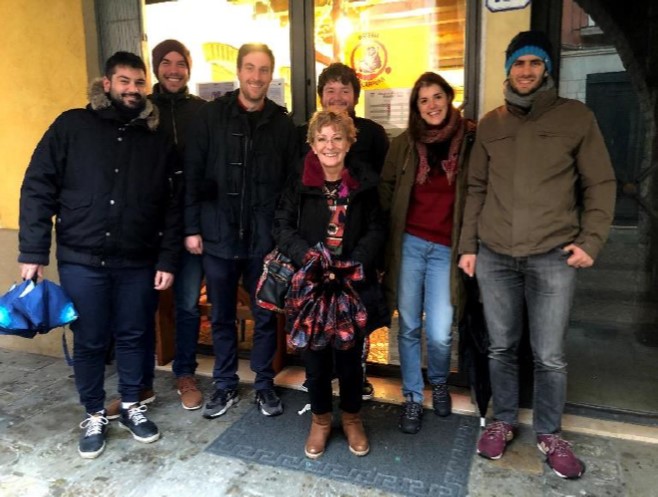
prof. Antonella Glisenti (antonella.glisenti@unipd.it)
Research activity focus: Design and realization of advanced functional materials and processes for sustainable development. Application fields that better inspire us for design, synthesis, optimization of Critical Raw Material-free catalysts and electrocatalysts:
1. Energy conversion and storage (Solid Oxide Fuel Cells, Solid Oxide Electrolysers)
2. Renewable fuel production by electrocatalysis (electrolysis and co-electrolysis) and catalysis (CO2 reduction)
3. Abatement of pollutants from automotive (Three Way Catalysts, Four Way Catalysts) and industrial exhausts; (2 European Projects on TWC and FWC: FP7 NEXT-GEN-CAT and H2020 PARTIAL PGMs).
A start up (www.efestoinnovation.it) has been created by ex-IMPACT membersgroup.
We were present in: EuropeanFuelCells 2019, EuropaCAT 2019, International Conference on Solid State Ionics 2019, 6th International Congress on Operando Spectroscopy 2018, CAPoC11 2018, 22nd Conference Solid Oxide Technologies: Fuel Cells (SOFC), Electrolysers (SOE) & Membrane Reactors (SOMR) 2018.
- CuO/La0.5Sr0.5CoO3 nanocomposites in TWC, Appl. Catal. B Environ., 2019, 255, Art 117753.
- Pulsed reactivity on LaCoO3-based perovskites: a comprehensive approach to elucidate the CO oxidation mechanism and the effect of dopants, Catal. Sci. Techn., 2019, 9, 2749.
- Rational Development of IT-SOFC Electrodes Based on the Nanofunctionalization of La0.6Sr0.4Ga0.3Fe0.7O3 with Oxides. PART 1: Cathodes by Means of Iron Oxide, ACS Appl. Energy Mat., 2018, 1, 6840.
- PGM-free CuO/LaCoO3 nanocomposites: New opportunities for TWC application, Appl. Catal. B Environ., 2018, 227, 446.
updated 30th January 2020
Interfaces & Nanomaterials for Catalysis (INCAT)
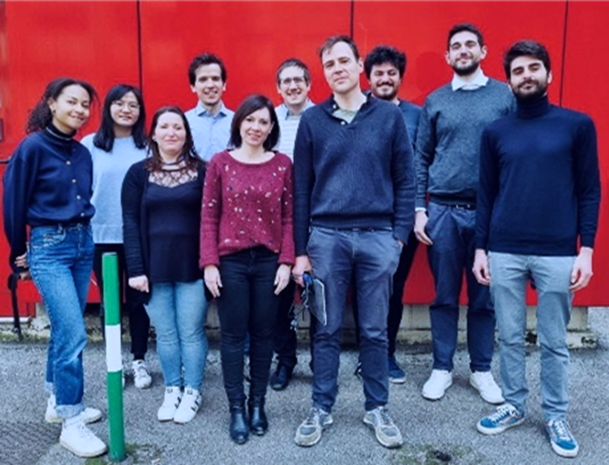
Prof. Stefano Agnoli (stefano.agnoli@unipd.it); Prof. Laura Calvillo (laura.calvillolamana@unipd.it); Dr. Francesca Arcudi (francesca.arcudi@unipd.it); Dr. Mattia Cattelan (mattia.cattelan@unipd.it);
The Interfaces & Nanomaterials for Catalysis (INCAT) group focuses on the rational design of innovative materials for applications in sustainable electro- thermo- and photo- catalysis. We follow a knowledge-driven approach based on the combination of advanced synthesis methods (chemical vapor deposition, solvothermal synthesis, aerosol process etc.) and sophisticated characterization techniques (electron spectroscopies, scanning probe microscopies) and operando studies (EC-STM, EXAFS, Raman spectroscopy).Our main research activities cover the study of emerging 2D materials, multiscale organic-inorganic hybrids (MOFs/COFs, functionalized carbon nanomaterials), and engineered single atom catalysts, for hydrogen electrochemical production, fine chemical synthesis through Green Chemistry methods, and CO2 valorisation.
- Atom-by-atom identification of catalytic active sites in operando conditions by quantitative noise detection, Joule, 2022, 6, 617 - 635.
- Operando visualization of the hydrogen evolution reaction with atomic-scale precision at different metal–graphene interfaces, Nature Catalysis, 2021, 4, 850 - 859.
- Copper single-atoms embedded in 2D graphitic carbon nitride for the CO2 reduction, npj 2D Materials and Applications, 2021, 5, 1 - 10.
- Hybridization of Molecular and Graphene Materials for CO2 Photocatalytic Reduction with Selectivity Control, Journal of the American Chemical Society, 2021, 143, 8414-8425.
- Palladium nanoparticles supported on graphene acid: A stable and eco-friendly bifunctional C–C homo-and cross-coupling catalyst, Green Chemistry, 2019, 21, 5238-5247.
updated April 26th , 2022
Laser Spectroscopy and Nanophotonics
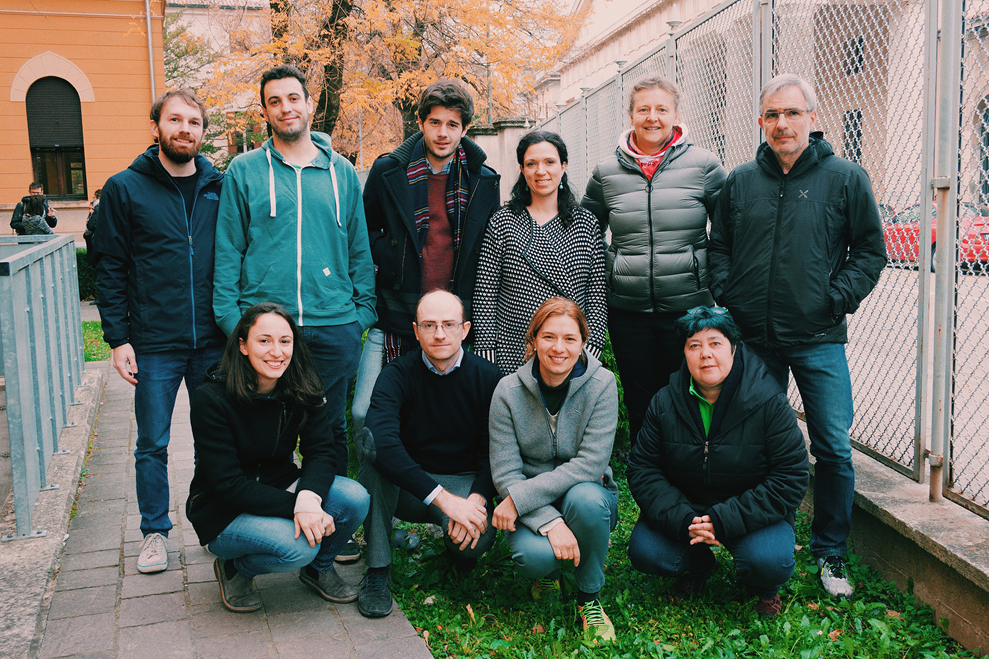
Elisabetta Collini (elisabetta.collini@unipd.it); Camilla Ferrante (camilla.ferrante@unipd.it); Danilo Pedron (danilo.pedron@unipd.it); Roberto Pilot (roberto.pilot@unipd.it); Raffaella Signorini (raffaella.signorini@unipd.it).
The group has a long-standing experience in the investigation of inter- and intra-molecular charge and energy transfer processes, ultrafast coherent and incoherent dynamics, and nonlinear optical response in complex systems like molecular crystals, molecular aggregates, metal and semiconductor nanoparticles. To this end we have developed experimental set-ups for time and frequency resolved optical spectroscopy experiments: 2D-electronic spectroscopy with fs resolution, transient absorption in the fs and ps time domain, time resolved fluorescence microscopy: FLIM and FCS, Raman and SERS spectroscopy, multiphoton absorption through Z-scan and fluorescence excitation experiments.
- E. Collini,2D Electronic Spectroscopic Techniques for Quantum Technology Applications, J. Phys. Chem. C, 2021, 125, 3096-13108
- V. Zani, D. Pedron, R. Pilot, and R. Signorini, Contactless Temperature Sensing at the Microscale Based on Titanium Dioxide Raman Thermometry, Biosensors, 2021, 11, 102.
- N. Peruffo, E. Collini et al., Selective switching of multiple plexcitons in colloidal materials: directing the energy flow at the nanoscale. Nanoscale, 2021, 13, 6005-6015.
- V. Weber , L. Brigo, G. Brusatin, G. Mattei, D Pedron, R. Pilot and R. Signorini, Hybrid Sol-Gel Surface-Enhanced Raman Sensor for Xylene Detection in Solution, Sensors, 2021, 21, 7912.
- M. Righetto, A. Privitera, I. Fortunati, D. Mosconi, M. Zerbetto, M. L. Curri, M. Corricelli, A. Moretto, S. Agnoli, L. Franco, R. Bozio, C. Ferrante, Spectroscopic insights into carbon dot systems, J. Phys. Chem. Lett., 2017, 8, 2236-2242
Macromolecular and Organic Chemistry
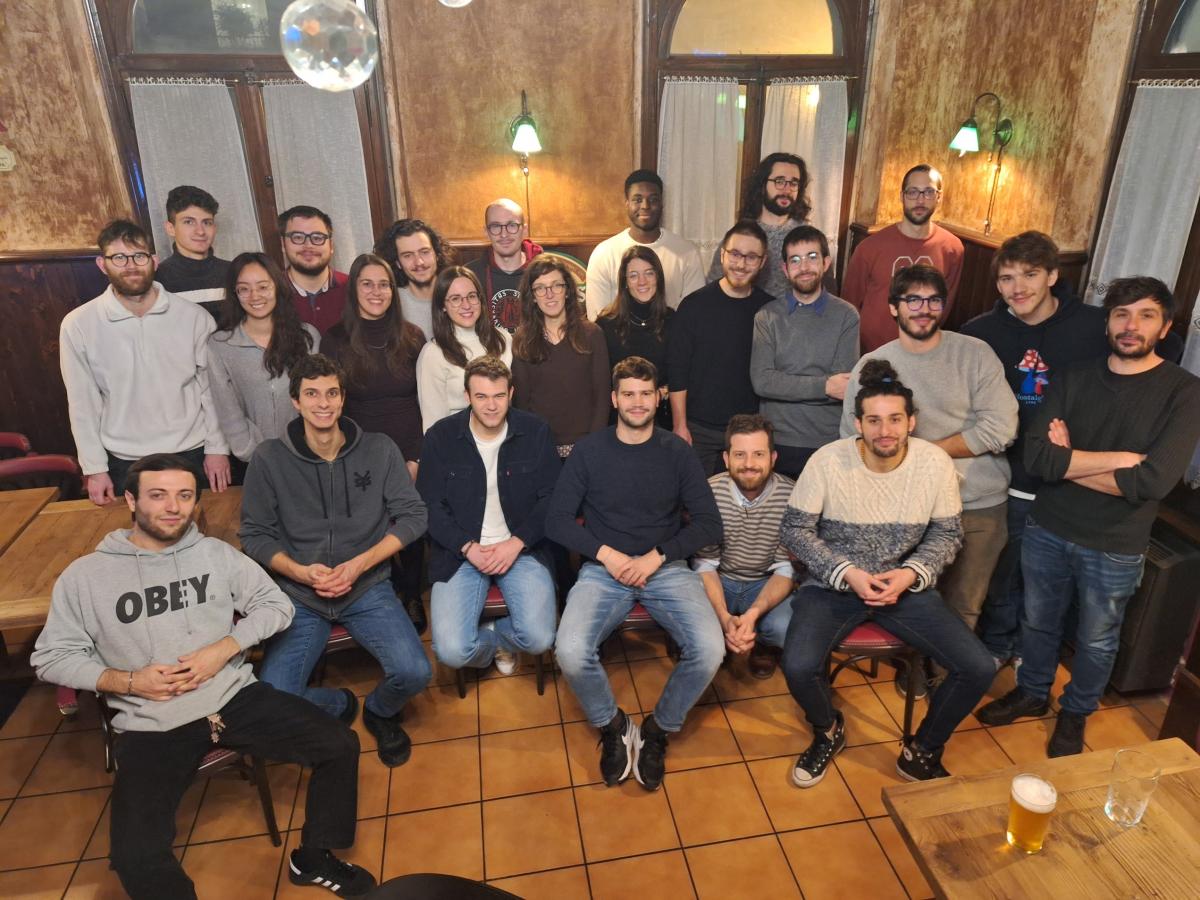
Prof Edmondo Benetti (edmondo.benetti@unipd.it), Dr. Francesca Lorandi (francesca.lorandi@unipd.it), Dr. Cristian Pezzato (cristian.pezzato@unipd.it)
Molecular Electrochemistry and Nanosystems
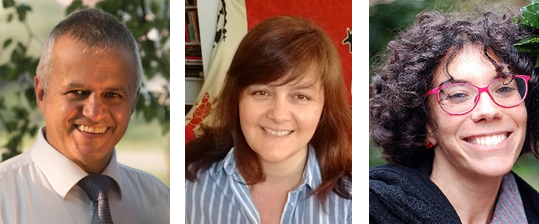 |
Flavio Maran (flavio.maran@unipd.it); Sabrina Antonello (sabrina.antonello@unipd.it); Sara Bonacchi (sara.bonacchi@unipd.it), Abhijit Nag (abhijit.nag@unipd.it)
The M.E.N. Group focuses on molecular aspects of electrochemical reactions and nanosystems, from both fundamental and applied viewpoints. Specific research topics include:
- Electron transfer through molecular bridges and interfaces;
- Dissociative electron transfer;
- Monolayer-protected clusters: electrochemical, optical and magnetic properties, redox catalysis, drug-delivery systems;
- Electrochemical sensors for cancer biomarkers and volatile chemicals;
- Self-assembled monolayers of conformationally constrained peptides.
The M.E.N. group is equipped with state-of-the-art electrochemical instrumentations, including electrogenerated chemiluminescence and SECM, STM and AFM, PM-IRRAS and UV-visible spectrometers, HPLC.
- Electrocrystallization of Monolayer Protected Gold Clusters: Opening the Door to Quality, Quantity and New Structures, J. Am. Chem. Soc., 2017, 139, 4168-4175.
- Magnetic Ordering in Gold Nanoclusters, ACS Omega, 2017, 2, 2607-2917.
- From Blue to Green: Fine Tuning of Photoluminescence and Electrochemiluminescence in Bifunctional Organic Dyes, J. Am. Chem. Soc., 2017, 139, 2060-2069.
- Molecular Electrochemistry of Monolayer-Protected Clusters, Curr. Opinion Electrochem., 2017, 2, 18-25.
- A Magnetic Look into the Protecting layer of Au25 Clusters, Chem. Sci., 2016, 7, 6910-6918.
Molecular Recognition and Catalysis
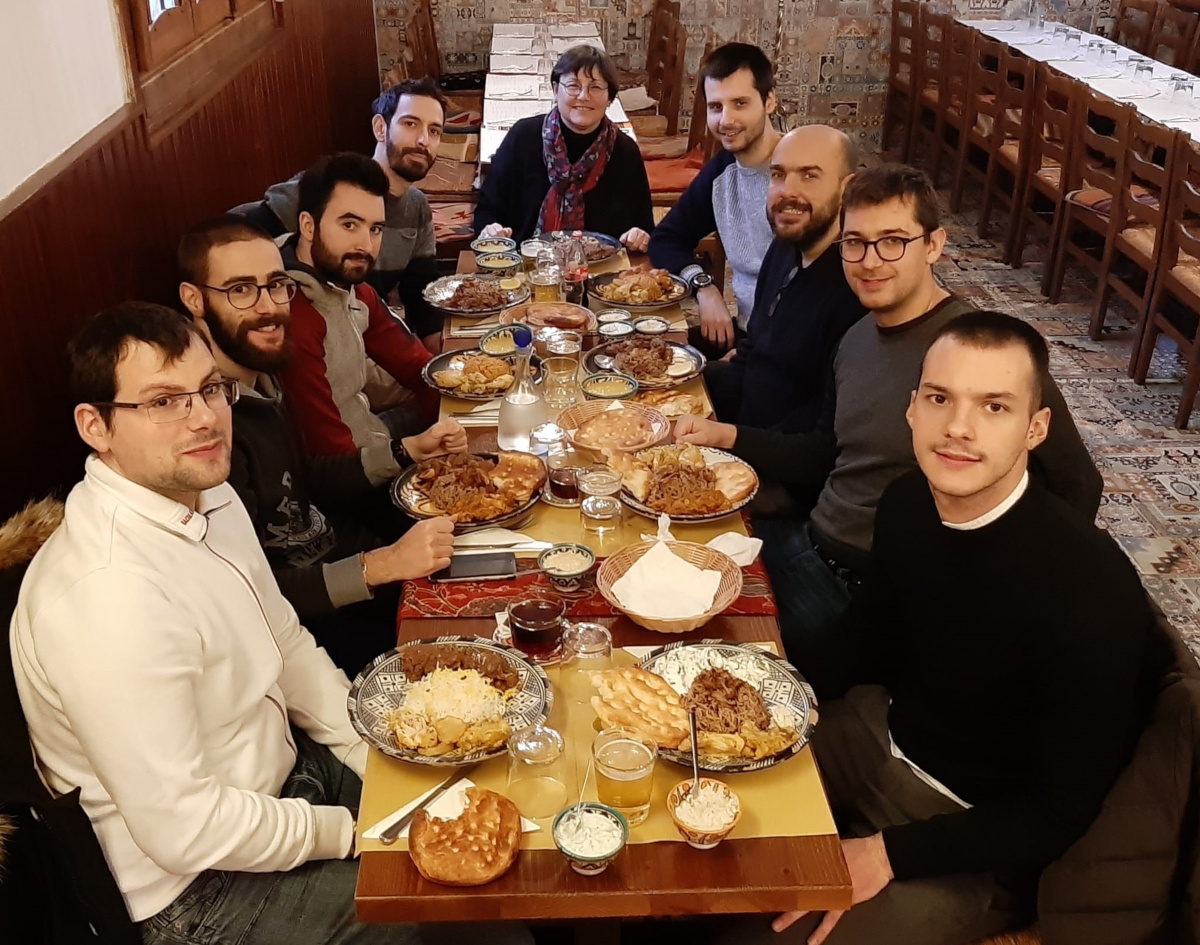
Giulia Licini (giulia.licini@unipd.it); Cristiano Zonta (cristiano.zonta@unipd.it); Manuel Orlandi ( manuel.orlandi@unipd.it).
The Molecular Recognition and Catalysis group is interested in all aspects of selective catalytic transformations and molecular recognition. Our research is centered on the design, discovery, and study of new catalytic systems that catalyze fundamentally useful organic reactions. These include, in particular Lewis Acid catalysis, oxidations, and new stereoselective transformations. In addition, we apply the tools of physical-organic chemistry tools to gain insights into the transition structure geometries and molecular recognition events that control reactivity and selectivity.
The following topics are currently under investigation in our laboratories:
1. Activation of Small Molecules (CO2, O2, H2O2); 2. Mimics of Physiologically Important Metallo-Enzymes (haloperoxidases, ligninperoxidases); 3. New Approaches to Catalyst Design and Recycling in Green Chemistry; 4. Self-Assembled Molecular Cages and Catalysis in Confined Spaces; 5. Probes for Enantiomeric Excess Determination; 6. Development of New Stereoselective C-C Bond Forming Reactions.
- Concentration-Independent Stereodynamic g-Probe for Chiroptical Enantiomeric Excess Determination, J. Am. Chem. Soc., 2017, 139, 15616–15619, DOI: 10.1021/jacs.7b09469.
- Triggering Assembly and Disassembly of a Supramolecular Cage, J. Am. Chem. Soc., 2017, 139, 6456–6460 DOI: 10.1021/jacs.7b02341.
- Vanadium(V) Catalysts with High Activity for the Coupling of Epoxides and CO2: Characterization of a Putative Catalytic Intermediate, ACS Catalysis, 2017, 7, 2367–2373, DOI: 10.1021/acscatal.7b00109.
– Efficient Vanadium-Catalyzed Aerobic C−C Bond Oxidative Cleavage of Vicinal Diols, Adv. Synth. Catal., 2018, 360, 3286-3296. DOI: 10.1002/adsc.201800050.
– A Diastereodynamic Probe Transducing Molecular Length into Chiroptical Readout, J. Am. Chem. Soc., 2019, 141, 11963-11969. DOI: 10.1021/jacs.9b04151.
Nanocarbon, PLasma chemistry and fUnctional Soft materials (N-PLUS)
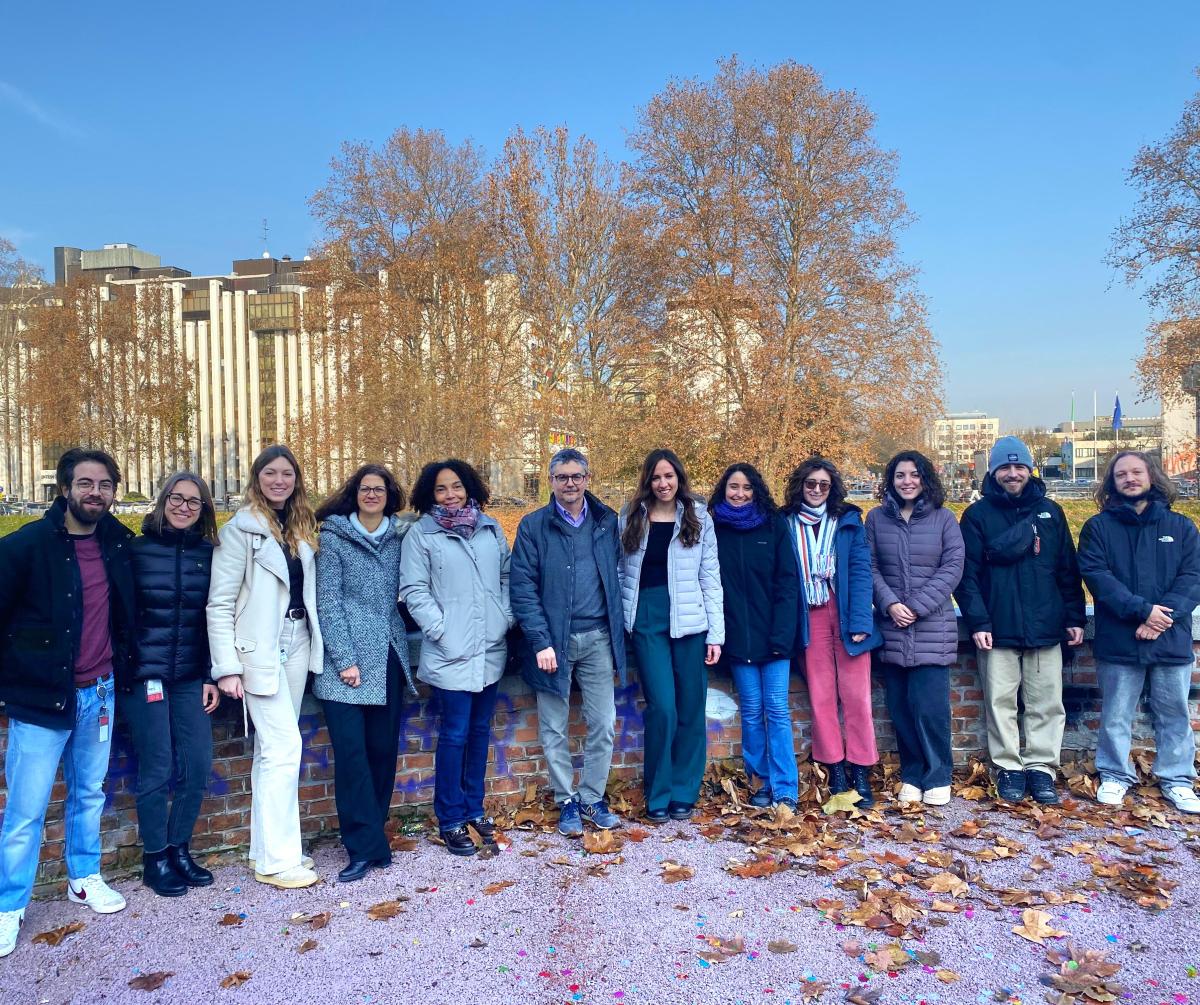
prof. Enzo Menna (enzo.menna@unipd.it) - prof. Ester Marotta (ester.marotta@unipd.it) - prof. Miriam Mba (miriam.mba@unipd.it)
Following different strategies, based on organic chemistry, the research activity of the group provides contributions to the advancement of knowledge in the fields of Energy, Environment and Tissue Engineering, through the investigation of specific interactions
of molecules and materials. These include interactions with cells, pollutants, light or atmospheric plasma or supramolecular interactions between molecules.
Competences in the team include the functionalization of carbon nanotubes and graphene, the synthesis of functional peptide based self-assembling materials and the study of chemical processes activated by cold atmospheric plasma.
The synergistic integration of our diverse skills and knowledge bolsters interdisciplinary research topics such as the followings.
Synthesis of nanocomposite materials enhancing photoinduced charge separation or transport for 3rd generation photovoltaics. Peptide-based soft materials and conjugated organic molecules with optoelectronic properties. Biomimetic nanocomposite hydrogel scaffolds for the growth and differentiation of cells and for tissue regeneration. Recyclable adsorbent nanomaterials for the removal of water pollutants.
Setting of plasma-based advanced processes for the degradation of poly- and perfluoroalkyl substances (PFAS) and other organic pollutants in water or adsorbed on activated carbon. Main characterization techniques used in the group are NMR, circular dichroism, UV-Vis-NIR absorption and emission, Raman, HPLC/UV-Vis, LC/MS, TGA and DSC.
Selected publications
• Enhanced Adsorption of Methylene Blue Dye on Functionalized Multi-Walled Carbon Nanotubes, Nanomaterials, 2024,14, 522. DOI: 10.3390/nano14060522
• Modified Carbon Nanotubes Favor Fibroblast Growth by Tuning the Cell Membrane Potential, ACS Appl. Mater. Interfaces, 2024, 16, 3093-3105. DOI: 10.1021/acsami.3c14527
• Self-Assembly and Electrical Conductivity of a New 1 benzothieno 3,2-b 1-benzothiophene (BTBT)-Peptide Hydrogel, Molecules, 2023, 28, 2917. DOI: 10.3390/molecules28072917
• Products, reactive species and mechanisms of PFOA degradation in a self-pulsing discharge (SPD) plasma reactor, Chemosphere, 2023, 341, 139972. DOI: 10.1016/j.chemosphere.2023.139972
• Organic functionalized carbon nanostructures for solar energy conversion, Molecules, 2021, 26, 5286. DOI: 10.3390/molecules26175286
group website
Nanostructures & (Bio)molecules Modeling
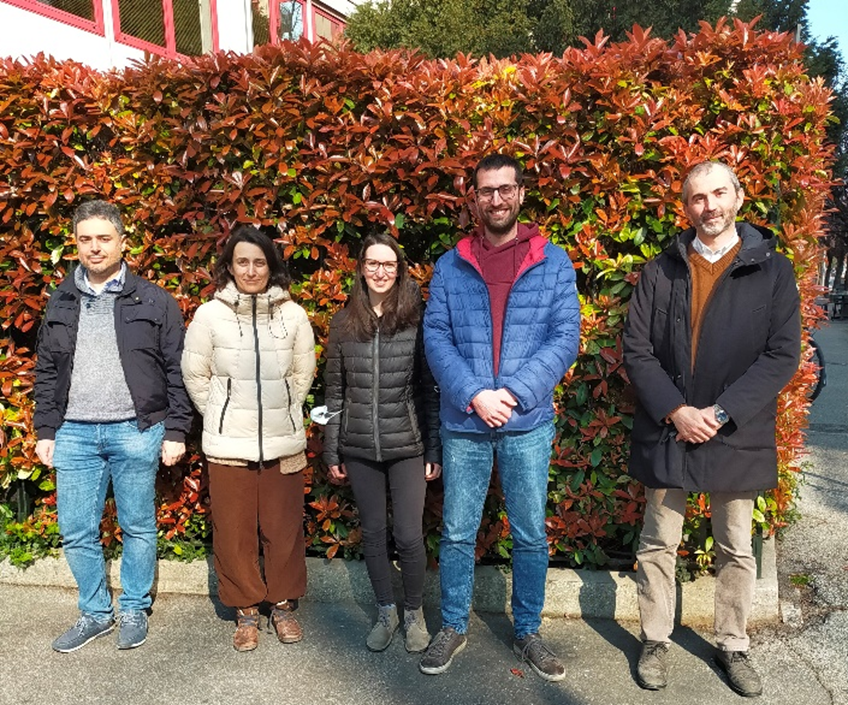
Stefano Corni (stefano.corni@unipd.it); Agostino Migliore (agostino.migliore@unipd.it)
The group develops and applies multiscale computational methods to describe hybrid systems, such as organic and biological molecules interacting with inorganic nanoparticles. The methods used range from ab initio atomistic calculations (also on quantum computers) and classical molecular dynamics to classical and quantum electrodynamics. The main research topics are:
-ultrafast spectroscopy and optical properties of molecules close to plasmonic nanostructures & in solution.
-the quantum nature of plasmonics excitations at the nanoscale.
-charge and energy transfer in (bio)molecules and in nanoscale structures
-the interactions of inorganic surfaces and nanoparticles with proteins.
The group is currently funded by EU H2020 and HE projects in which light-biomolecule interactions play a major role.
- Strong coupling between localized surface plasmons and molecules by coupled cluster theory, Nano Letters, 2021, 21, 6664-6670
- The physical origin of a photon-number parity effect in cavity quantum electrodynamics, Results in Physics, 2021, 30, 104690
- Charge transfer between [4Fe4S] proteins and DNA is unidirectional. Implications for biomolecular signaling, Chem, 2019, 5, 122-137
- Manipulating azobenzene photoisomerization through strong light–molecule coupling, Nature Communications, 2018, 9, 4688-9
- How to Identify Plasmons from the Optical Response of Nanostructures, ACS Nano, 2017, 11, 7321–7335.
Nano & Molecular Catalysis
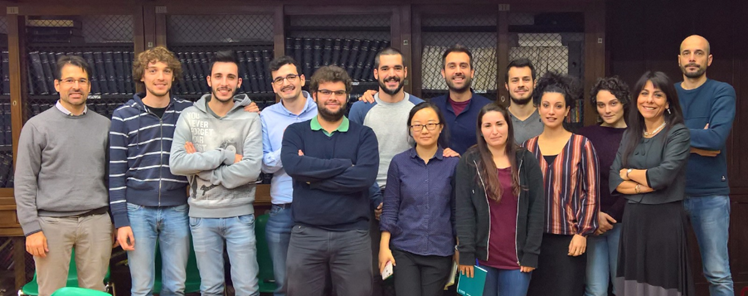 |
Marcella Bonchio (marcella.bonchio@unipd.it); Mauro Carraro
(mauro.carraro@unipd.it); Andrea Sartorel (andrea.sartorel@unipd.it); Luca
Dell’Amico (luca.dellamico@unipd.it); Giacomo Saielli (giacomo.saielli@unipd.it); Paolo Costa (paolo.costa@unipd.it); Francesco Rigodanza (francesco.rigodanza@unipd.it); Daniele Mazzarella (daniele.mazzarella@unipd.it); Giulio Goti (giulio.goti@unipd.it); Katy Elizabeth Medrano Uribe (katyelizabeth.medranouribe@unipd.it);
The group has established a highly interdisciplinary activity on the study of novel bio-inspired catalytic systems, molecular materials and functional hybrid architectures. Main topics include: (i) artificial photosynthesis: development of multi-redox routines powered by light irradiation for water splitting, CO2 fixation and stereoselective light-driven reactions for the synthesis of biologically relevant molecules with application to flow photochemistry; (ii) design of synthetic enzymes (synzymes), bio-conjugate nanomaterials and hybrid membranes for the interaction with diverse biological targets involved in ROS-related diseases, with applications in catalysis and nanomedicine; (iii) computational modeling in collaboration with ITM-CNR: DFT calculations of spectroscopic properties of organic and organometallic systems and MD simulations of ionic liquids and ionic liquid crystals.
- Hydrogen Evolution by FeIII Molecular Electrocatalysts Interconverting between Mono and Di-Nuclear Structures in Aqueous Phase, ChemSusChem, 2017, 10, 4430–4435.
- Photo-assisted water oxidation by high-nuclearity cobalt-oxo cores: tracing the catalyst fate during oxygen evolution turnover, Green Chem., 2017, 19, 2416-2426.
- Merged Heme and Non-Heme Manganese Cofactors for a Dual Antioxidant Surveillance in Photosynthetic Organisms, ACS Catal., 2017, 7, 1971-1976.
- Tuning Iridium Photocatalysts and Light Irradiation for Enhanced CO2 reduction, ACS Catal., 2017, 7, 154-160.
- Dynamic Anti-Fouling of Catalytic Pores Armed with Oxygenic Polyoxometalates, Adv. Mater. Interfaces, 2015, 2, 1500034-1500034.
Nanostructures & Optics
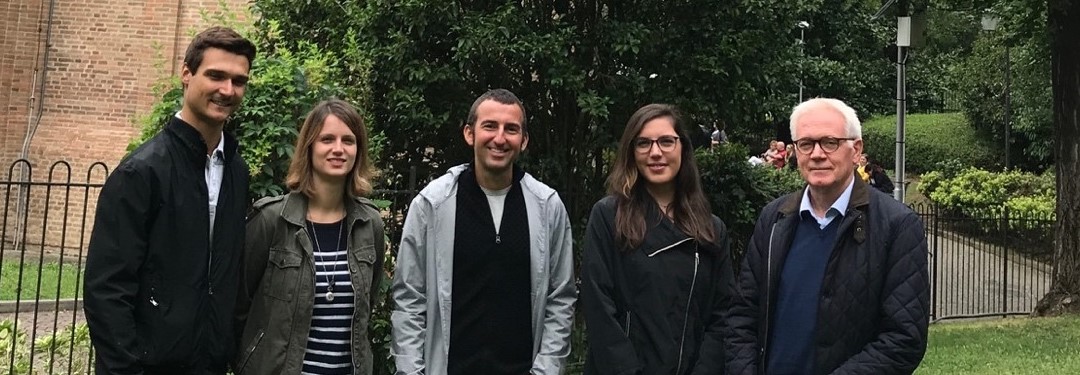
Prof. Moreno Meneghetti (moreno.meneghetti@unipd.it); dr. Lucio Litti (lucio.litti@unipd.it)
Research activities at NOL are on the synthesis, characterization, modelling and applications of nanostructures in nanobiotechnology and related fields and for new nanomaterials for solar energy conversion (photovoltaic and thermal) and cultural heritage. Nanostructures are usually obtained by laser ablation of bulk solids under solvents. Plasmonic properties of metal nanoparticles are exploited in particular for the SERS (surface enhanced Raman scattering) effect, whereas the magnetic properties for magnetophoresis. Finite element based simulations are used to model the optical responses of complex nanostructured assemblies. For the nanobiotechnology field the SERS technique is used for applications like tumor cell targeting and identification, functionalizing plasmonic and magneto-plasmonic nanostructures with antibodies and engineered peptides. Nanobiotechnology, but also environmental applications are developed also using µfluidic devices to be integrated in new portable sensor technologies. Raman and SERS nanostructures are exploited also in cultural heritage studies for the identification of pigments, dyes, and other organic materials present in artworks.
- Predictions on the SERS enhancement factor of gold nanosphere aggregate samples, Physical Chemistry Chemical Physics, 2019, 21, 15515 – 15522.
- A surface enhanced Raman scattering based colloid nanosensor for developing therapeutic drug monitoring, Journal of Colloid and Interface Science, 2019, 533, 621 – 626.
- Safe core-satellite magneto-plasmonic nanostructures for efficient targeting and photothermal treatment of tumor cells, Nanoscale, 2018, 10, 976–984.
- Enhanced EGFR Targeting Activity of Plasmonic Nanostructures with Engineered GE11 Peptide, Adv. Healthcare Mater., 2017, 6, 1700596.
- High-Quality, Ligands-Free, Mixed-Halide Perovskite Nanocrystals Inks for Optoelectronic applications, Advanced Energy Material, 2017, 7, 1601703.
updated 1st October 2019
Organic Synthesis and Materials
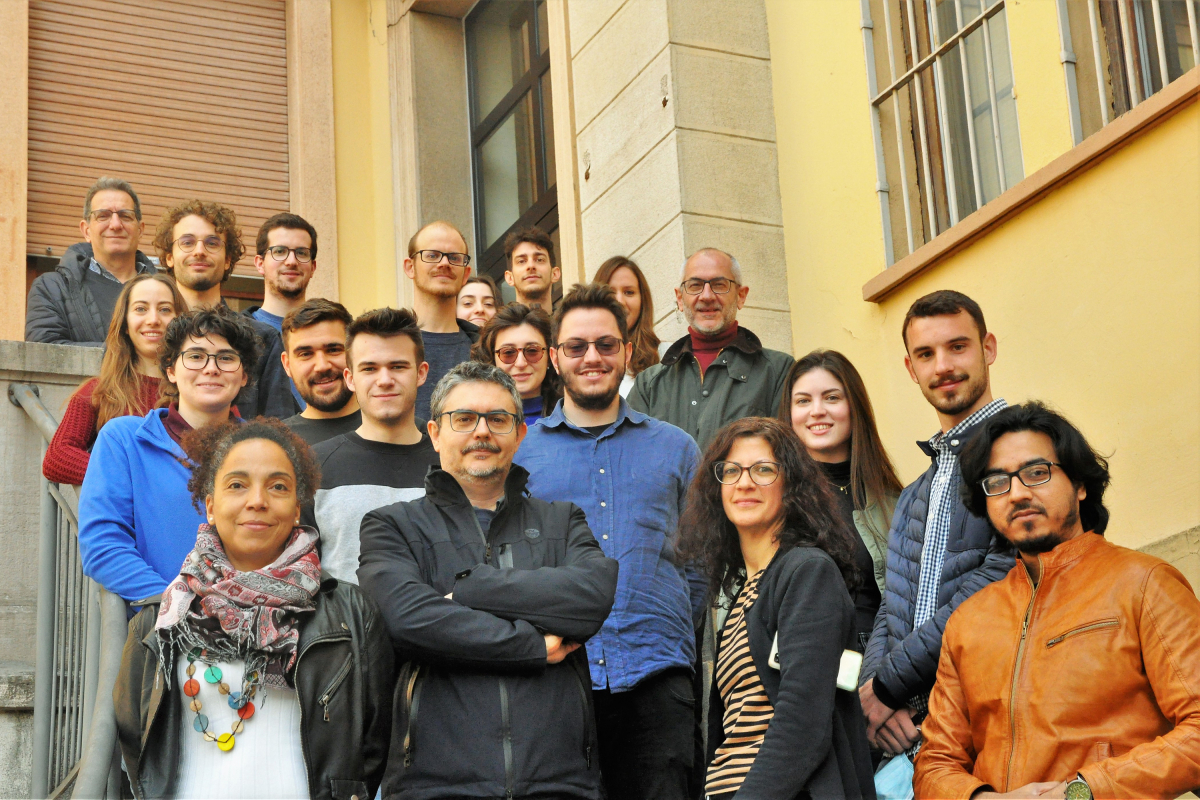
Prof. Tommaso Carofiglio (tommaso.carofiglio@unipd.it); Prof. Michele Maggini (michele.maggini@unipd.it); Dr.Luka Đorđević (luka.dordevic@unipd.it); Kui Zeng (kui.zeng@unipd.it)
Organic synthesis towards functional materials is at heart of the group, whose research focuses mainly on the chemical and plasma functionalization of carbon nanostructures for solar energy conversion, environmental and biomedical applications, the use of nanocellulose as a platform for bio-inspired functional materials and the preparation of functional supramolecular gels. We often use the microfluidics toolbox to study reactions or surface absorption kinetics, the controlled functionalization of nanosystems or the batch-to-flow transposition of active pharmaceutical ingredients of industrial interest. Main characterization techniques for organic synthesis and materials, including high-field and solid-state NMR, NIR absorption, TGA and DSC thermal analysis, AFM-STM at ambient conditions, benchtop flow reactors and cleanroom facilities are commonly accessed by the group components.
- Mild Microfluidic Approaches to Oxide Nanoparticles Synthesis, Chem.Eur.J., 2022, 28, e202103132
- Graphene-Based Scaffolds for Regenerative Medicine, Nanomaterials, 2021, 11, 404.
- Metal Cation Triggered Peptide Hydrogels and Their Application in Food Freshness Monitoring and Dye Adsorption, Gels, 2021, 7, 85
- Achieving selectivity in porphyrin bromination through a DoE-driven optimization under continuous flow conditions, J. Flow Chem., 2021, 11, 163-169.
- Comparative performance assessment of plasma reactors for the treatment of PFOA; reactor design, kinetics, mineralization and energy yield. Chem. Eng. J., 2020, 382, 123031.
Updated: April 8th, 2022
Polymer Science
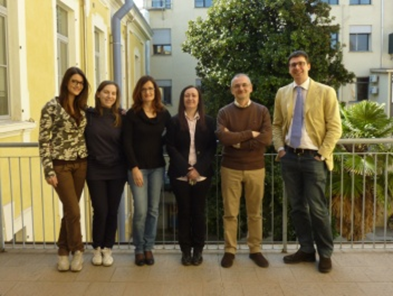 |
Carla Marega (carla.marega@unipd.it), Valerio Causin (valerio.causin@unipd.it)
In the labs of the Polymer Science group, different kinds of polymers and nanocomposites are studied, focusing particularly on their morphological and structural aspects (crystallization, lamellar morphology, polymorphism). The study, conducted on different scales, allows to obtain a global and complete picture of the considered materials. In fact, by wide angle X-ray diffraction (WAXD) the molecular structure, the type of crystalline cell and the dimensions of crystallites are studied, by small angle X-ray scattering (SAXS) and electron microscopy the lamellar morphology is investigated. From acquired diffractograms, in order to obtain the crystallinity degree, lamellar thicknesses and distributions, sophisticated computer software is used. Once characterization data have been obtained as a function of process or formulation parameters, the influence of these latter factors on polymer morphology and physical-mechanical properties is determined, with the purpose of obtaining a structure-property correlation to be used in the design of materials. The study is completed by thermal analysis (DSC and simultaneous DSC-TGA) and optical microscopy. Besides composite polymeric fibers are prepared via electrospinning, using as fillers: silver particles, clays, carbon nanotubes, carbon quantum dots, graphene and others.
- Nanocrystalline cellulose-fullerene: Novel conjugates, Carbohydrate Polymers, 2017, 164, 92-101.
- Neuronal commitment of human circulating multipotent cells by carbon nanotube-polymer scaffolds and biomimetic peptides, Nanomedicine, 2016,11,1929-1946.
- Synthesis and photochemical applications of processable polymers enclosing photoluminescent carbon quantum dots, ACS nano, 2015, 9, 4156-4164.
- Covalent functionalization enables good dispersion and anisotropic orientation of multi walled carbon nanotubes in a poly(L-lactic acid) electrospun nanofibrous matrix boosting neuronal differentiation, Carbon, 2015, 95, 725-730.
- Characteristics of TEMPO-oxidized cellulose fibril-based hydrogels induced by cationic ions and their properties, Cellulose, 2015, 22, 1993-2010.
Soft Matter Theory

Prof. Alberta Ferrarini (alberta.ferrarini@unipd.it); Dr. Francesco Avanzini (francesco.avanzini@unipd.it)
We use and develop statistical mechanical theories and computer simulations to reach a microscopic understanding of equilibrium and nonequilibrium properties of Soft Matter. Different methods and techniques, suitable to bridge different time and length scales, are employed and developed to address questions of interest to biophysics and materials science.
Research topics:
- Chirality propagation across length scales in self-assembling systems (polymers, nucleic acids, supramolecular aggregates);
- Elastic, rheological and thermodynamic properties of soft matter systems (lipid membranes, liquid crystals, polyelectrolytes, colloids, emulsions and gels);
- Nonequilibrium chemical processes and self-organization at different scales.
Publications:
Modeling of minimal systems based on ATP-Zn coordination for chemically fueled self-assembly, Phys. Chem. Chem. Phys. 2023, 25, 6102.
Spontaneous twisting of achiral nematic rods, Phys. Rev. Lett. 2023, 130, 1.
Helical inclusions in phospholipid membranes: lipid adaptation and chiral order, J. Phys. Chem. Lett. 2019, 10, 5629.
Circuit Theory for Chemical Reaction Networks, Phys. Rev. X 2023, 13, 021041
Deficiency, Kinetic Invertibility, and Catalysis in Stochastic Chemical Reaction Networks, J. Chem. Phys. 2023, 158, 204108
updated September 26th, 2023
Supramolecular Nanochemistry and Advanced NMR
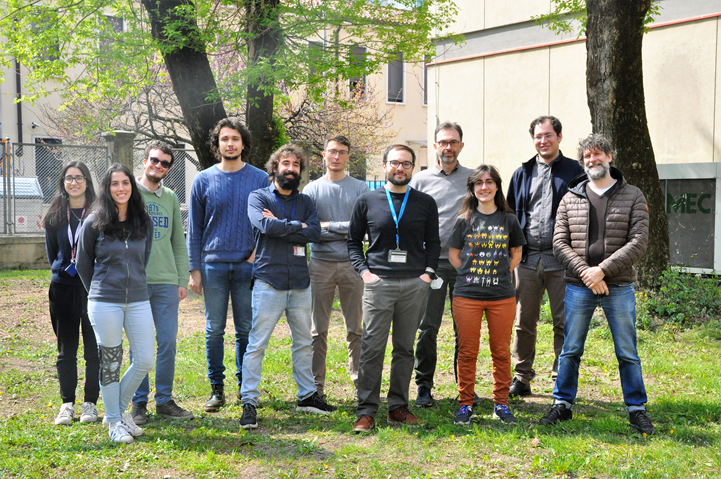
Fabrizio Mancin (fabrizio.mancin@unipd.it); Federico Rastrelli (federico.rastrelli@unipd.it)
The research activity of the group is focused on the development of self-organized nanosystems for molecular recognition and innovative NMR methods for their structural investigation. Monolayer-protected gold, silica and polylipoic nanoparticles are the key scaffolds of our systems. We demonstrated how self-organization of these nanoparticles can be exploited for cooperative catalysis, sensing and drug delivery. The most relevant application is the NMR detection of analytes: using tailor-made receptor nanoparticles and custom NMR sequences we demonstrated the possibility to extract the 1H spectrum of the target molecules from that of the whole mixture even at micromolar concentrations. Other fields explored include pH2 hyperpolarization, food analysis, the study of nano-bio interactions, photonic nanohybrids. The group is supported by EU (MSCA-ITN), CARIPARO, AIRC.
- “On the Metal-Aided Catalytic Mechanism for Phosphodiester Bond Cleavage Performed by Nanozymes” ACS Catalysis, 2021, 11, 8736-8748.
- “Hybrid nanoreceptors for high sensitivity detection of small molecules by NMR chemosensing” Chem. Commun. 2021, 57, 3002-3005.
- “Host-Guest Allosteric Control of an Artificial Phosphatase” J. Am. Chem. Soc., 2020, 142, 6837-6841.
- “Nanoparticle-assisted NMR spectroscopy: Enhanced detection of analytes by water mediated saturation transfer” J. Am. Chem. Soc., 2019, 141, 4870–4877.
- "Molecular-Dynamics-Simulation-Directed Rational Design of Nanoreceptors with Targeted Affinity" Angew. Chem.-Int. Edit., 2019, 58, 7702-7707.
Updated April 26th, 2022
Surface Supramolecular Chemistry
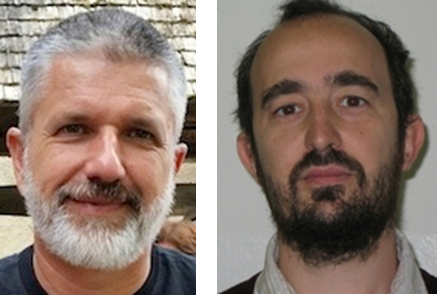
Mauro Sambi (mauro.sambi@unipd.it), Francesco Sedona (francesco.sedona@unipd.it)
The SSC Group’s research activities deal with the thermo- and photoinduced on-surface synthesis of 2D materials starting from supramolecular assemblies of functionalized precursors, with a particular emphasis on the preservation of a high degree of long-range order throughout the process. The group manages an ultra-high vacuum chamber equipped with scanning tunneling microscopy (STM) and other surface science tools, interfaced with both single-wavelength and tunable laser sources for in-vacuum surface photochemistry with molecular resolution. An ambient STM/AFM instrument for solid/liquid and solid/air investigations complements the available equipment. The group has ongoing collaborations with several Italian and European groups active in the field of on-surface synthesis and molecular magnetism.
- Metal-Free on-Surface Photochemical Homocoupling of Terminal Alkynes, J. Am. Chem. Soc., 2016, 138, 10151-10156.
- Tunable Band Alignment with Unperturbed Carrier Mobility of On-Surface Synthesized Organic Semiconducting Wires, ACS Nano, 2016, 10, 2644-2651.
- Molecules–Oligomers–Nanowires–Graphene Nanoribbons: A Bottom-Up Stepwise On-Surface Covalent Synthesis Preserving Long-Range Order, J. Am. Chem. Soc., 2015, 137, 1802-1808. (WOS highly cited paper)
- Stereoselective Photopolymerization of Tetraphenylporphyrin Derivatives on Ag(110) at the Sub-Monolayer Level, Chem. Eur. J., 2014, 20, 14296-14304. (Hot Paper, Back Cover).
- Tuning the catalytic activity of Ag(110)-supported Fe phthalocyanine in the oxygen reduction reaction, Nat. Mater., 2012, 11, 970-977.
Synthetic Photocatalysis, Design and Mechanisms
The research group interests spans within the fields of organic synthesis and catalysis, and photochemistry. We solve complex synthetic problems in a sustainable manner, merging light with homogeneous/heterogeneous catalysis. Our main expertise include the design and synthesis of novel organic photocatalysts (J. Am. Chem. Soc. 2023, 145, 3, 1835–1846), well as the investigation of the reaction mechanism that allow access to previously unexplored reactivity (Chem. Sci. 2024, 15, 271).
Prof. Luca Dell’Amico (luca@unipd.it); Dr Cristian Rosso (cristian.rosso@unipd.it); Dr Giulio Goti (giulio.goti@unipd.it); Dr Daniele
Mazzarella (daniele.mazzarella@unipd.it); Dr Katy Medrano
(katyelizabeth.medranouribe@unipd.it)
The activity of the group focuses on different research topics:
1) The design, synthesis, and characterization of novel organic
photocatalysts, and their utilization in innovative light-driven processes.
2) The development of novel sustainable synthetic methods, involving the
use of organocatalysis, photocatalysis, and flow chemistry to access
important biologically active compounds and key structural building
blocks.
3) The study and elucidation of complex light-driven transformations by
means of in-situ NMR, laser flash photolysis, as well as DFT analysis.
The group is supported by EU with the ERC Starting Grant SYNPHOCAT,
several MSCA Actions, PRIN and PNRR Young Researchers program.
1. “The Rational Design of Reducing Organophotoredox Catalysts Unlocks Proton-Coupled
Electron-Transfer and Atom Transfer Radical Polymerization Mechanisms” J. Am. Chem. Soc.
2023, 145, 1835–1846.
2. “Unveiling the impact of the light-source and steric factors on [2+2] heterocycloaddition
reactions” Nat. Synth., 2023, 2, 26–36.
3. “A General Organophotoredox Strategy to Difluoroalkyl Bicycloalkane (CF2-BCA) Hybrid
Bioisosteres” Angew. Chem. Int. Ed. 2023, 135, e2023035.
4. “A Rational Approach to Organo‐Photocatalysis. Novel Designs and Structure‐Property‐
Relationships” Angew. Chem. Int. Ed. 2021, 133, 1096-1111.
5. " Mechanisms and Synthetic Strategies in Visible-Light-Driven [2+2]-Heterocycloadditions "
Angew. Chem. Int. Edit., 2023, 62, e202217210.
Group Website: https://dellamicogroup.com/
Systems Chemistry
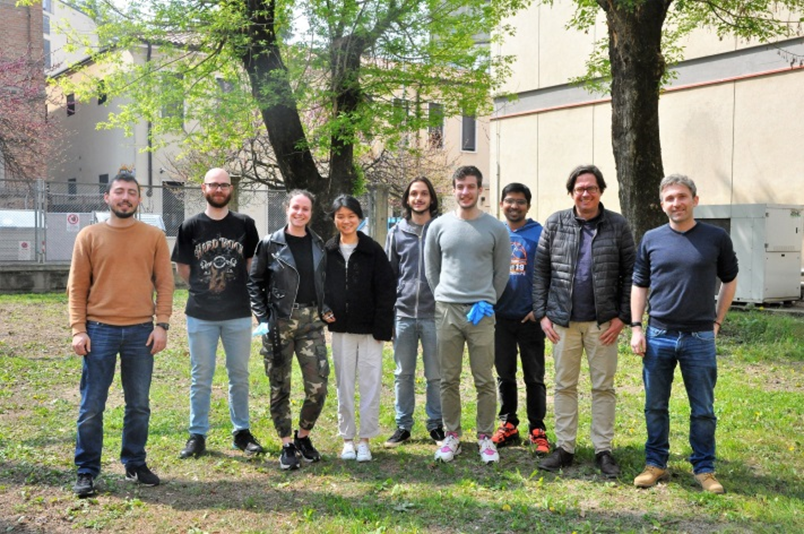
Prof. Leonard Prins (leonard.prins@unipd.it); Dr. Luca Gabrielli (luca.gabrielli@unipd.it); Dr. Haridas Kar (haridas.kar@unipd.it)
Systems chemistry aims at understanding how properties emerge from complex chemical systems. Chemists have so far approached the understanding of biology by reducing complex events to simple reactions and interactions. However, despite decades of intense biomimetic research, it is currently still unclear which conditions are required for a mixture of chemicals to become ‘alive’ and acquire the ability to grow, communicate, move, evolve, etc... The key point is that these so-called emerging properties cannot be traced back to a single molecule, but are the product of an ensemble of molecules. Systems chemistry is considered the third wave in the evolution of chemistry after the discovery of covalent and noncovalent bond-formation. The capacity to understand the chemical origin of life will permit the development of intelligent materials with ‘life-like’ properties.
References:
- Das, K.; Gabrielli, L.; Prins, L.J. Chemically fueled self-assembly in biology and chemistry, Angew. Chem. Int. Ed. 2021, 60, 20120-20143.
- Rosa-Gastaldo, D.; Pečiukėnas, V.; Hunter, C.A.; Gabrielli, L. Duplex vs. folding: tuning the self-assembly of synthetic recognition-encoded aniline oligomers Org. Biomol. Chem. 2021, 19, 8947-8954.
- Gabrielli, L.; Hunter, C.A. Supramolecular catalysis by recognition-encoded oligomers: discovery of a synthetic imine polymerase Chem. Sci. 2020, 11, 7409-7414.
- Chen, R.; Neri, S.; Prins, L.J. Enhanced catalytic activity under non-equilibrium conditions, Nat. Nanotechnol. 2020, 15, 868-874.
- Ragazzon, G.; Prins, L.J. Energy consumption in chemical fuel-driven self-assembly, Nat. Nanotechnol. 2018, 13, 882-889.
Updated Apri 26th, 2022


